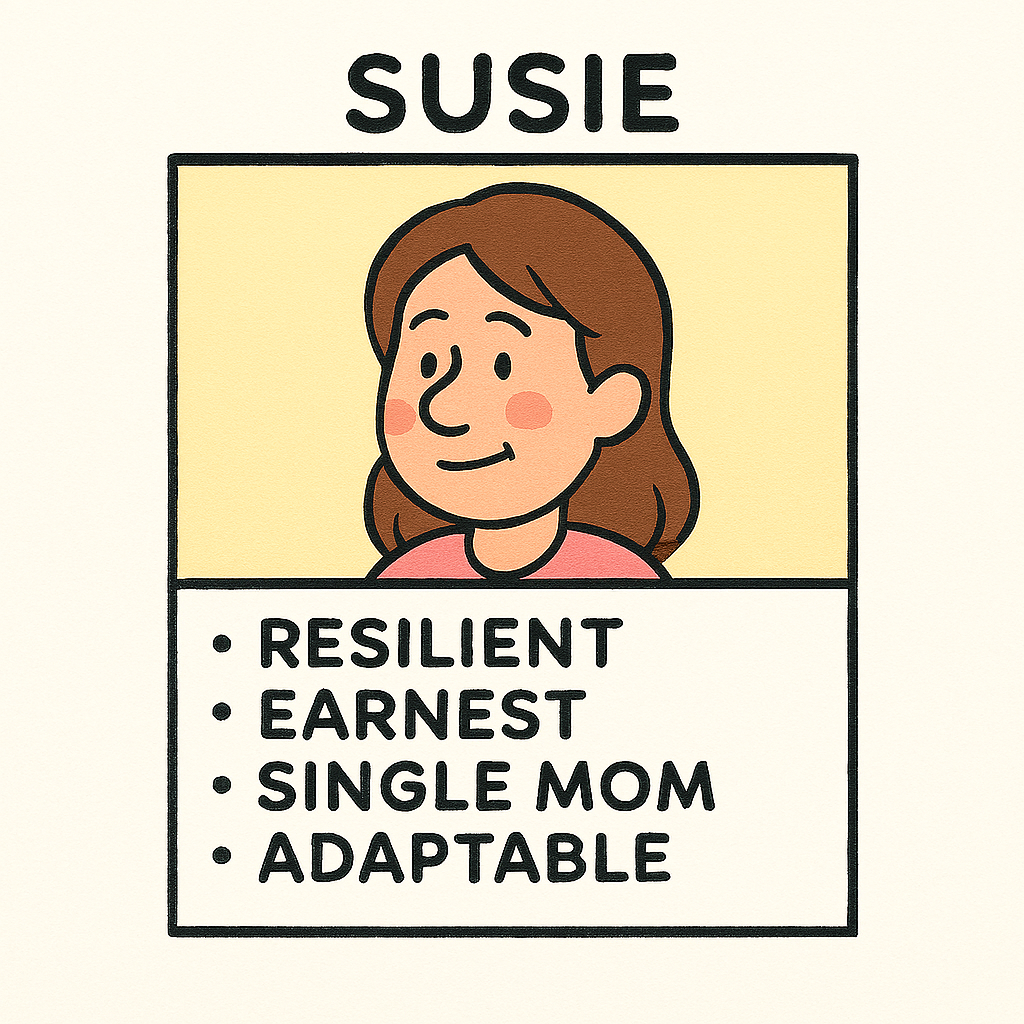People vs. Idea: The Leadership Tradeoff Behind Tough Talent Calls
How understanding both ends of the People vs. Idea spectrum can sharpen your judgment in high-stakes decisions
In quadrant-based leadership models, we often explore the tension between how leaders work (Action vs. Process) and what drives their decisions (People vs. Idea). This post focuses on the latter: the invisible tug-of-war between empathy and abstraction, loyalty and logic, human context and strategic potential.
Let’s bring this axis to life with a “fun” scenario I have sed with teams to illustrate this:
The Situation: A Business at a Crossroads
You run a small business. A major shift in technology has cut your client base in half. You have two client-facing employees—both well-liked, both competent—but you can only afford to keep one.
Meet Bob
45, single, $75K/year
20 years in the role, never misses a deadline
Loyal, flexible, consistent
Well-liked by clients and colleagues
Gets counter offers from other companies
Has hobbies, friends, and a full life outside work
Meet Susie
30, single mother of three, $55K/year
5 years in the role, occasionally misses deadlines due to life demands
Works hard to stay consistent, makes good on deadlines missed
Clients love her, they appreciate that she listens to them and understands them
Always eager to learn new systems
No external support system, very focused on motherhood
Both are valuable. Both have advocates. But one must go.
For those playing along:
Who did you decide to keep?
Why did you decide to keep them?
Do you think it was People or Idea inclination?
Do you feel it was Thinking or Feeling?
Any second thoughts or indecision?
The People vs. Idea Axis: What’s Really Driving Your Decision?
This axis isn’t about personality, it’s about what you prioritize under pressure.
High People
Values loyalty, empathy, relationships
Focuses on human impact
May over-accommodate
Risks: Sentimentality, indecision
High Idea
Values strategy, innovation, long-term fit
Focuses on future potential
May over-intellectualize
Risks: Detachment, cold logic
Salary as a Signal: Not Just a Number
Salary isn’t just a budget line; it’s a proxy for:
Tenure and leverage (Bob has been counter-offered)
Perceived value (Susie earns less but may offer more upside)
Operational cost vs. strategic reinvestment
From a High People lens, Susie’s lower salary may evoke protection: “She needs this more.”
From a High Idea lens, it may signal opportunity: “Lower cost, higher adaptability.”
But from an Execution lens, Bob’s higher salary may feel justified: “He’s earned it, and he delivers.”
Idealism vs. Operational Reality: The Leadership Paradox
You might think:
“Susie needs this job more. Bob can easily find another and make more money. Keeping Susie saves margin and supports equity. That’s the win-win.”
But your team might say:
“You’re full of baloney. You’ll keep Bob because you don’t want to step in when Susie misses a day.”
This is the tension between:
• Idealism: Vision, empathy, strategic optimism
• Operational reality: Risk, reliability, personal bandwidth
Both are valid. But quadrant-aware leaders don’t choose based on guilt or convenience, they diagnose the tradeoffs.
Mapping Bob and Susie Across the Axis
Using Lominger’s behavioral lens, we can see how each employee might be perceived depending on your quadrant bias:
If You’re High on People:
Bob shines: Loyal, consistent, emotionally low-maintenance
Lominger tie-ins: “Caring About Direct Reports,” “Interpersonal Savvy,” “Boss Relationships”
Susie evokes empathy: Resilient, earnest, but occasionally inconsistent
Lominger tie-ins: “Compassion,” “Listening,” “Patience” (but possibly “Time Management” unskilled)
If You’re High on Idea:
Bob may seem static: Reliable, but resistant to change
Lominger tie-ins: “Learning Agility” (possibly underused), “Innovation Management” (neutral)
Susie may signal adaptability: Younger, growth-oriented
Lominger tie-ins: “Dealing with Ambiguity,” “Strategic Agility,” “Creativity”
The Manager’s Dilemma: When Bias Masquerades as Logic
Different managers will struggle in different ways:
High-People Managers may delay the decision, hoping for a miracle or trying to “save” both.
High-Idea Managers may make a quick, clinical call, missing the human cost or cultural ripple effects.
Action-Oriented Managers might default to whoever is more “available” or “responsive.”
Process-Oriented Managers might over-index on attendance records or tenure.
But quadrant-aware leaders pause. They ask:
What am I privileging here, comfort or clarity? Sentiment or strategy?
Leading from the Center: Integrating People and Idea
The best decisions come from leaders who can see both sides:
Empathize with the human story and assess strategic fit
Honor loyalty while planning for future adaptability
Balance short-term disruption with long-term viability
At Growth Spectrum, we call this leading from the center. It’s not about being neutral, it’s about being integrative.
From Gut Reaction to Grounded Decision
When you understand your own quadrant bias, you stop reacting and start diagnosing. You move from “Who do I like more?” or “Who’s easier to manage?” to “What does the business need now, and next?”
That’s the power of quadrant-based leadership
Ready to sharpen your decision-making lens?
Email Growth Spectrum LLC to start the conversation today.
Check out the sister blog to this one Process vs. Action in Leadership
Click here for the application of Quadrant Thinking in our ULM development methodology




